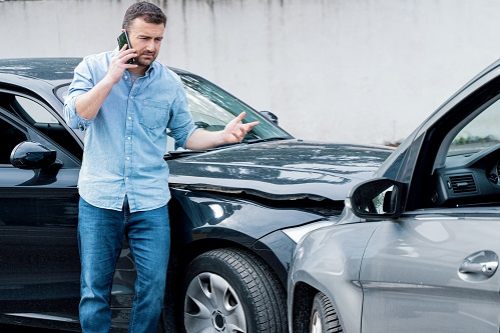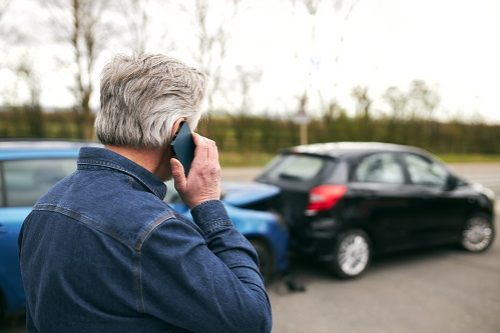Go beyond the state minimum for liability
Auto liability insurance covers you as the car's driver for any type of injury or damage that you may cause someone else when you're behind the wheel.
Don't settle for your state's minimum liability coverage. The most common state minimums are $25,000 per person and $50,000 per incident for bodily injury, while property damage is often $25,000 or less.
The highest state minimum for bodily liability is Maine and Alaska, which are both $50,000 per person and $100,000 per incident.
In California, drivers are only required to carry $15,000 per person and $30,000 per incident of bodily injury coverage, and only $5,000 for property damage.
In even a moderately serious accident, these limits will be exceeded quickly. Consider a situation where you hit a brand-new Mercedes and three people are badly injured. Low state minimum limits will be exceeded almost instantly. Increase your limits for better protection.
How much liability coverage should you get?
Insurance experts recommend carrying at least $100,000 per person and $300,000 per accident for bodily injury coverage, along with $100,000 for property damage.
However, how much coverage you need is a personal decision. Consider your assets and everything you stand to lose if you were to face a lawsuit over an accident, and raise your limits accordingly.
Protect yourself against uninsured and underinsured drivers
You can find yourself underinsured simply because someone else doesn't have enough coverage. If an uninsured or underinsured driver is at fault in an accident and they don't carry enough insurance to cover the damages you've sustained, uninsured/underinsured motorist coverage will kick in. This coverage also applies if you are victim of a hit-and-run collision or if you are hit as a pedestrian.
Check health insurance before choosing medical expenses coverage
Medical payments or personal injury protection covers the treatment of your own or a passenger's injury or a pedestrian's injury following an accident. It also covers things such as lost wages.
This coverage could cost anywhere from a few dollars to $50 or so a month. You'll want to check the extent of your health insurance policy and any disability coverage that you already have before deciding just how much of this required auto insurance coverage to get. With hospital and medical expenses so high, you don't want to go too low with your coverage amount.
Add collision coverage for your car
Collision coverage covers your car when in an at-fault accident with another vehicle or an object, such as a tree or road sign, or in a rollover accident. This coverage is optional, unless you have a loan or lease on your car, in which case it will be required. It also has a deductibl; the higher the deductibleThe deductible is the amount you pay out of pocket for a covered loss when you file a claim. you choose the lower your premiumThe payment required for an insurance policy to remain in force. Auto insurance premiums are quoted for either 6-month or annual policy periods. amount will be.
Without collision coverageCollision coverage helps pay for repairs or replacement of your car if it's damaged in an accident, regardless of who is at fault and is subject to a deductible., you'll pay out of pocket for repairs to your vehicle in any situation where another driver isn't at fault.
Don't forget comprehensive coverage
Comprehensive coverage protects you from non-accident damage such as that caused by fire, falling objects, explosions, earthquakes, floods, hail, windstorms, and contact with animals. It also covers you for theft or vandalism.
Like collision, this coverage is required if you have a loan or lease. It also has a deductible, and it tends to be pretty affordable since it covers only non-accident incidents.
Auto insurance protects you
Are you still wondering just how much insurance you need? Are you worried that you may be underinsured somewhere with your auto insurance coverage? An auto insurance coverage calculator can help you to determine your needs.
If you're at fault in the accident and your insurance doesn't cover the full amount of the damages, the other driver may sue you in court. If they win, your assets could be forfeit. The risk of losing everything is not worth the few dollars you'll save on car insurance by carrying lower limits.



